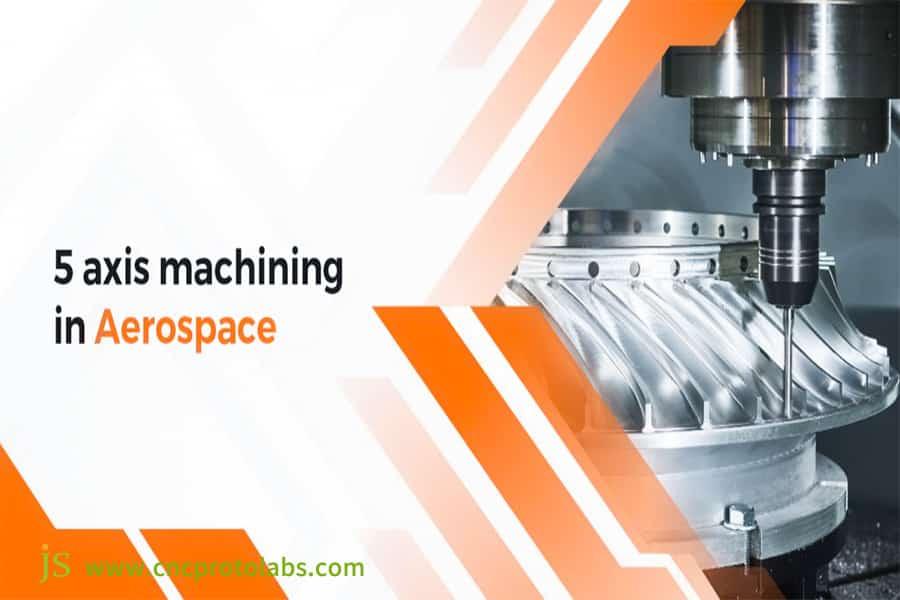In a week, a machine can mill the extremely curved titanium blades of a turbofan engine from a solid ingot with surfaces precise enough to guide supersonic airflow. It then mills the massive, bearing structure where the wing attaches to the fuselage, with each contacting surface flawless.
This isn't future technology, but the daily routine of today's top 5 axis CNC machining services. In aerospace, the quest for complexity, lightweighting, and flat-out reliability has made 5 Axis CNC Machining an "option" no more but a "must."
This is a hands-on manual which will help you see clearly how to successfully obtain aerospace standard CNC machined parts with 5 axis CNC machining services, providing you with a reliable reference for your manufacturing needs.
Key Answer Summary
| Core Dimensions | Key Values | Typical Applications and Achievements |
| Technical Advantages | Complete complex machining in a single setup, eliminating errors and improving precision and efficiency.Capable of machining complex geometries such as negative angles and deep cavities. | Applications include engine blades, blisks, integrated wings, and satellite mounts. |
| Quality and Reliability | Strict adherence to aerospace-grade tolerances (micrometer-level) and surface finish standards ensures ultimate part reliability. | Examples include engine rotor roundness control and 100% pass rate for spacecraft heat shield sensor cavities. |
| Experience | JS Precision has over 15 years of experience, serving over 300 aerospace companies worldwide and delivering over 10,000 parts. | JS Precision has achieved a 25% weight reduction in wings for passenger aircraft manufacturers and specializes in machining aerospace materials such as 7075-T6 aluminum alloy and titanium alloy. |
Why Trust Us? JS Precision 5-Axis Service Case Studies
JS Precision has been seriously engaged in the aerospace 5 Axis CNC machining business for over 15 years, having shipped over 10,000 CNC machined parts and provided service to over 300 aerospace firms across the world with a consistent product qualification rate of over 99.8%.
Our capabilities cover a spectrum of significant areas such as machining a one-piece aluminum alloy wing for an airliner producer to 25% weight reduction, and making a heat shield sensor cavity for a space re-entry capsule for a space agency to 100% qualification.
We have also machined various intricate parts, e.g., engine blocks, blisks, and satellite brackets, and know the machining characteristics of aerospace materials such as 7075-T6 aluminum alloy, Ti-6Al-4V titanium alloy, and Inconel 718 nickel-based alloy.
This handbook is a summary of our practical experience. From technical explanations to case studies, every part has been tried and tested in live projects. It can be trusted for its practicality and professionalism.
JS Precision has been in business with providing 5-axis CNC machining services to the aerospace industry for over 15 years and has manufactured over 10,000 CNC machined parts. To be guaranteed of service, post your 3D model online and we will provide expert feedback within 24 hours, allowing you to acquire qualified parts quickly.
Beyond Three Dimensions: Demystifying The 5-Axis CNC Machine Meaning & Value
To understand the advantages of 5-Axis CNC Machining, it is first necessary to clarify the 5-axis CNC machine meaning.
It is not five machines put together, but one comprehensive machine tool which possesses coordinated simultaneous motion in five axes (X, Y, and Z linear axes + A and C rotary axes). Five-axis coordination enhances the flexibility of machining of complex parts.
5-axis machining and 3+2 positioning machining are terminologies that are ambiguous. The differences between the two are clarified in the table below:
| Comparison Dimensions | 3+2 Positioning Machining | 5-Axis Simultaneous Machining |
| Motion Method | Lock the three linear axes first and the two rotary axes to machine. | All of the five axes move simultaneously and in continuity without any pause. |
| Parts Applicable | Polyhedral parts (brackets, casing, etc.) | Complex curved parts (engine blades, guide vanes, casing, etc.). |
| Clamping Times | Multiple clamping is required, with each time axis position change. | Single clamping machining. |
| Machining Accuracy | Highly prone to repeatable positioning errors, which render it low accuracy. | Immaculate of repeatable positioning errors, meeting high requirements of ±0.0125mm. |
| Surface Quality | Prone to tool marks, which result in average surface quality. | No tool marks, resulting in smoother finish. |
Why is 5-axis technology a natural market for the aerospace industry? This is on the basis of three part properties:
- In integrated structures with "lightweight and high strength" (such as integrated wings), 5-axis machining is able to machine complicated structures straight out of a single item of material.
- In complicated aerodynamic/force-transmitting surfaces (such as engine blades), 5-axis machining provides precise machining.
- In expensive materials (such as titanium alloys and nickel-based alloys), 5-axis machining cuts down on waste and saves costs.
JS Precision has a deep understanding of the 5 axis CNC machine meaning and aviation manufacturing requirements, clearly distinguishing between 3+2 positioning and 5-axis machining conditions. Choose our 5 axis machining aerospace service and upload a model to receive a customized process solution, making machining of complex pieces easy.
Unlocking The Impossible: How 5-Axis Machining Is Reshaping Aerospace Manufacturing
5-Axis CNC Machining is largely revolutionizing aerospace manufacturing, visualized in four key points:
1. Single-Setup Power:
Traditionally, machining of crucial CNC machined parts like engine cases and landing gear has to be conducted in a series of setups, which are easily susceptible to positioning errors. 5-Axis machining can be done in a single setup, completely wiping out these errors. As an example, coaxiality of landing gear can be maintained within 0.003mm tolerance.
2. Shorter Tools, Greater Accuracy:
5-Axis machining facilitates the use of shorter tools, hence reducing vibration, improving surface quality, and cutting parameters. For example, in titanium alloy blisk machining, shorter tools can achieve surface finishes less than Ra0.4μm and reduce machining time by 20%.
3. Conquer Challenging Geometry:
Negative angles and steep cavities of components such as blisks and guide vanes are difficult to machine on traditional machines. With 5-axis machining, flexible positioning of tool angles is realized, allowing precise milling of negative angles without compromising dimensions.
4. Weeks to Months:
A Production Speeder and Prototyping Powerhouse: For rapid prototyping and small series production, 5-axis machining reduces the complexity of tools and number of equipment changeovers. For example, a prototype of an engine combustion chamber, normally taking three months to make, takes two weeks in 5-axis machining.
JS Precision's 5 axis CNC machining services maximizes the advantages of 5-axis machining to ensure precise control over critical parts and machining of complex geometries. Send in your requirements online, and we will design a solution based on part features to help you shorten your production cycle.
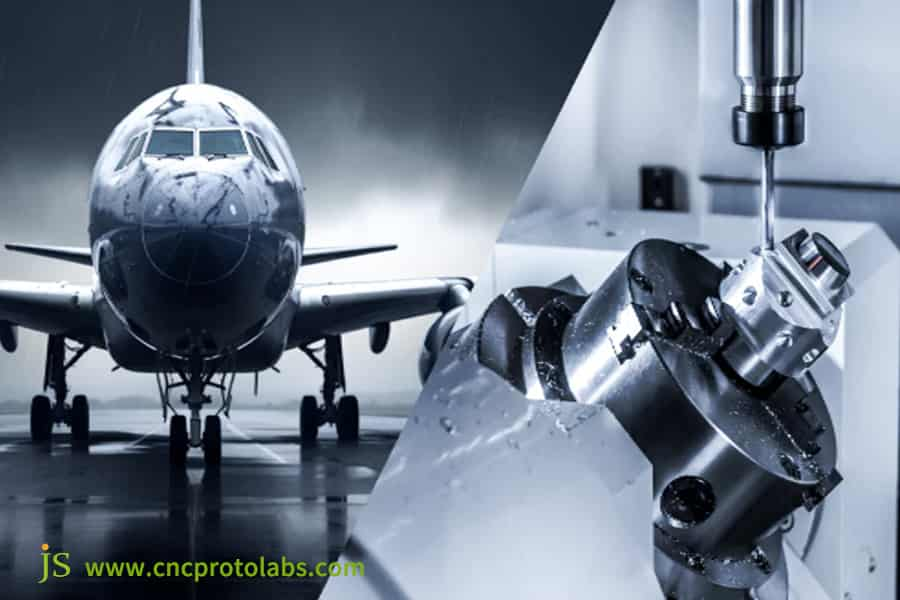
Figure 1: Precision five-axis CNC machine tools are used for milling aerospace engine blades
The Quest For Micron Levels: Tolerances And Surface Finish Standards For Aerospace Parts
Aerospace parts achieve micron-grade accuracy, with standards as given in the table below:
| Accuracy Type | Needed Standard | Use Cases |
| Dimensional Tolerances | Normal ±0.05mm, critical features (threaded holes, mating surfaces) usually need ±0.0125mm or better. | Engine case mating surfaces, sensor mounting holes, and threaded fittings. |
| Geometric Tolerances | Flatness ≤ 0.005mm/m, roundness ≤ 0.003mm, coaxiality ≤ 0.005mm. | Landing gear shafts, engine rotors, and fuselage frame connecting shafts. |
| Surface Finish | Routine surface Ra ≤ 0.8μm, critical aerodynamic/mating surfaces Ra ≤ 0.4μm. | Engine aerodynamic blades, heat shield spacecraft surfaces, and fuselage skin connection surfaces. |
Geometric tolerances are more important than dimensional tolerances. If the roundness of an engine rotor is out of the standard, high-speed rotation will cause vibration, leading to compromise in stability and even accidents. Surface finish is also highly important, very good Ra This value can improve fatigue strength, reduce aerodynamic drag, and prevent fretting wear.
Precision Process: Digital Model To Airworthiness-Approved Aerospace Part
This path from digital model to airworthiness-approved part involves a stringent four-step process:
1. Digital Definition and Process Planning: CAD is used to create a 3D model, CAM is used to process planning, and DFAM analysis is done. Machining paths are determined, tools are selected, and parameters are set (e.g., carbide special tools are used to machine titanium alloys) for the efficiency and feasibility of parts CNC machining.
2. High-Precision Manufacturing Implementation: After process planning, CNC code generation and fixture design are implemented to keep the blank in position. On-machine measurement technology is utilized at the time of machining to measure dimensions and correct in real time to maximize accuracy.
3. Outside the Machining Value Chain: Machined parts are heat treated (e.g., aging treatment for 7075-T6 aluminum alloy) and surface treated (e.g., anodizing). Finally, the non-destructive testing (NDT) using fluorescent penetrant and X-ray is carried out to identify internal defects.
4. Quality Verdict at the End: Comprehensive checking and report generation using the help of a coordinate measuring machine (CMM). The Full Dimensional Inspection Report (FAIR) is then accompanied by the part after the final inspection to ensure quality.
JS Precision strictly follows this precision process to ensure that every part CNC machining meets the requirements. Upload a virtual model and we will take care of the entire process, from process planning right through to delivery, providing you with high-quality CNC machining services.
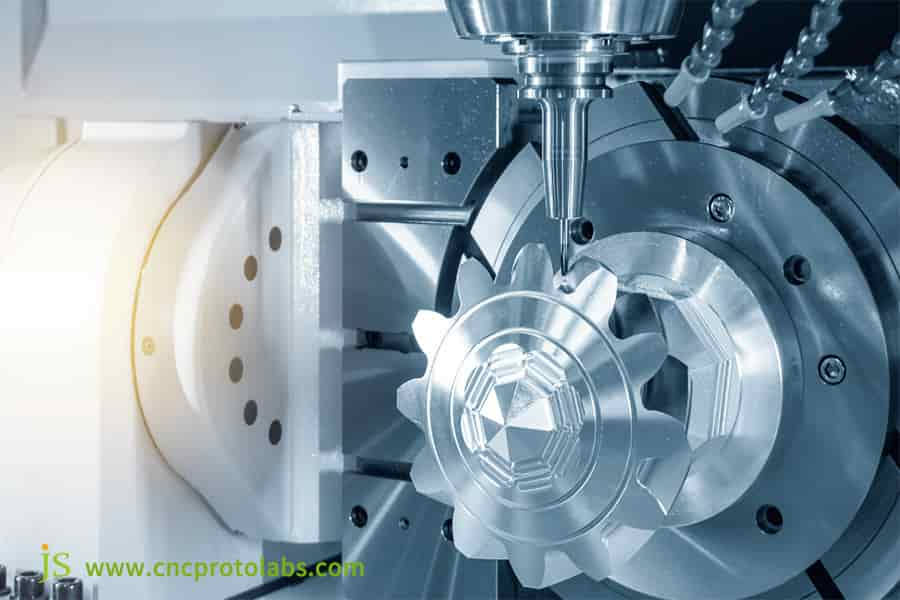
Figure 2: aerospace parts cnc machining
From Sky To Space: Critical CNC Machined Parts Made Possible By 5-Axis Technology
5 Axis CNC Machining enables the precise manufacture of numerous types of vital aerospace components:
Powertrain components
Including engine blade, blisk, casing, and combustion chamber components.
- Engine blades' curved complex surface should be machined with high accuracy using 5-axis machining in order to benefit aerodynamic performance.
- The integrated structure of the bladed disk can be machined by 5-axis machining to reduce clamping errors and gain higher overall accuracy.
- 5-axis technology can be employed to machine the deep cavities and complex hole systems of the casing in one pass.
Flight Frame
This consists primarily of the fuselage frame, wing spars, ribs, and bulkhead structures.
- The body frame often adopts an integrated design, and it can be machined out from a single block of aluminum alloy through 5-axis machining, thus reducing the joints and improving structural stiffness.
- The wing spars are the load-carrying structure of the wing and have complex cross-sectional geometries that have to be machined with 5-axis machining to ensure accurate dimensions.
Control System
It includes helicopter rotor head, actuator housing, and rudder linkages.
- Helicopter rotor head multi-directional connection holes require accurate positioning, and 5-axis machining ensures the coaxiality of each hole.
- Deep holes and complex internal cavities of the actuator housing can be accurately machined with 5-axis technology such that the hydraulic system functions properly.
Mission-Specific Hardware
Rocket engine nozzle extensions, antenna reflectors, and satellite mounts belong to this class.
- Satellite brackets are required to be lightweight but very strong, and 5 axis machining can enable complex hollow structures.
- Antenna reflectors are required to be of very high surface accuracy, and 5 axis machining can enable cutting of these curved surfaces with precision to ensure maximum signal transmission.
Material Choice: Choosing The Right "Warrior" For Aerospace Components
The following table reports the material properties and application areas for aerospace parts:
| Material Type | Typical Model | Performance Characteristics | Application Area |
| High-Strength Aluminum Alloy | 7075-T6 | Strong, lightweight, and with excellent processability, balancing lightness and strength. | For fuselage frames, wing parts, and bulkhead components. |
| Titanium Alloy | Ti-6Al-4V | Large strength-to-weight ratio, temperature resistance (about 400°C), and corrosion resistance, also known as "space metal." | Used in engine blades, landing gears, and spacecraft structural elements. |
| High-Temperature Nickel-Based Alloy | Inconel 718 | Supports very high temperature (650°C) and pressure, and fatigue and corrosion resistant. | Used in engine combustion chamber, turbine disk, and nozzle components. |
| High-Performance Composite Material | Carbon Fiber Reinforced Plastic (CFRP) | Light, high strength, and aging resistant but difficult to process. | Used in satellite brackets, fuselage skin molds, and helicopter rotor blades. |
Aerospace uses are common to aluminum 5-axis CNC machining. 7075-T6 Aluminum alloys are widely used in fuselage frames, 5-axis machining is equally inevitable in composite preform molds manufacturing, which enables precise machining of complex curved surfaces without any loss of accuracy.
JS Precision provides machining of any type of aerospace material with expert experience in aluminum 5-axis CNC machining and titanium alloy machining. Should you require a part to be machined from a specific type of material, upload your model on to our site and we'll produce a bespoke machining plan based on the material's properties.
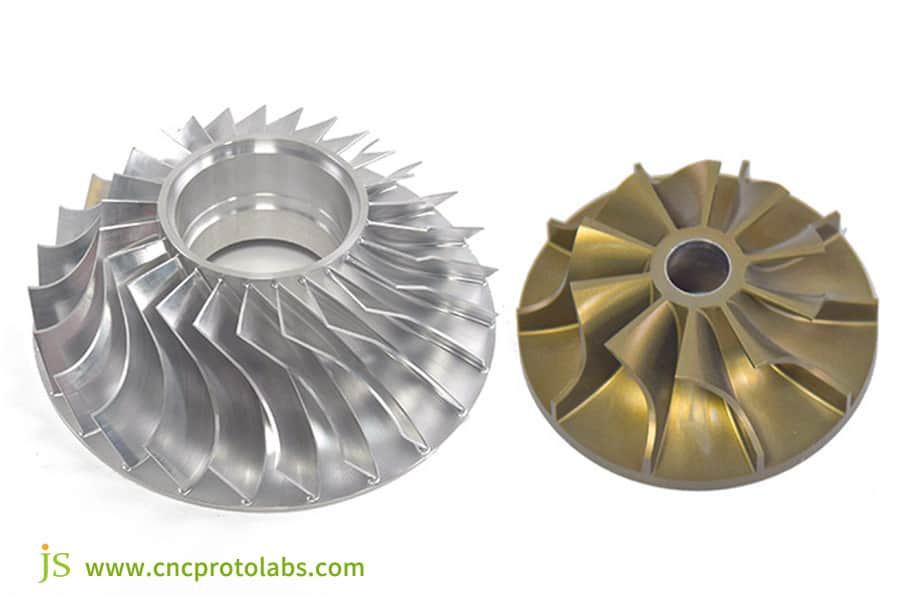
Figure 3: Aerospace aluminum alloy parts machined by 5-axis CNC
Case Study 1: 25% Weight Reduction: JS Precision Uses Five-Axis Machining To Manufacture A Monolithic Wing
Challenge
An aerospace company needed to manufacture a monolithic aluminum alloy wing 2 meters long with internal ribs of reinforcement and precise external aerodynamic surfaces. Traditional rivet operations entail joining over 20 parts, adding the weight of the wing and leaving it with a number of seams that impact aerodynamics.
The customer demanded utmost weight reduction without compromising stiffness, while dimensional tolerances were required to be maintained at ±0.02mm. This was a machining job that was difficult to accomplish.
Solution
JS Precision utilized 5 axis CNC machining technology by employing its MVR-2000 big-size 5-axis CNC machine to machine the complete wing structure directly out of a single thick aluminum alloy sheet. Taking advantage of five-axis machining capabilities, we obtained two major operations:
- Machined the intricate internal "grid" of reinforcement ribs with precision, reserving excess material as per the topology-optimized design to realize rigidity along with lightweighting.
- Smooth, curved surfaces are machined on the whole upper and lower wing surface in one single step, eliminating the tool marks introduced due to the multiple clamping operations and ensuring best aerodynamic performance.
Achievements
In comparison to traditional riveted structures, this hybrid wing weighs 25% lighter and improves the overall stiffness by 15%. Aerodynamic drag is found to be reduced by 8% during wind tunnel tests, which essentially increases the flight endurance of the aircraft.
Furthermore, utilizing coordinate measuring machine testing, all the geometric tolerances of the wing are maintained within ±0.02mm, which is perfectly in line with the customer's stringent specifications.
TechBullion has also focused on high difficulty machining projects similar to JS Precision, believing that the efficiency and precision improvements achieved through technological innovation provide important references for the aviation manufacturing industry.
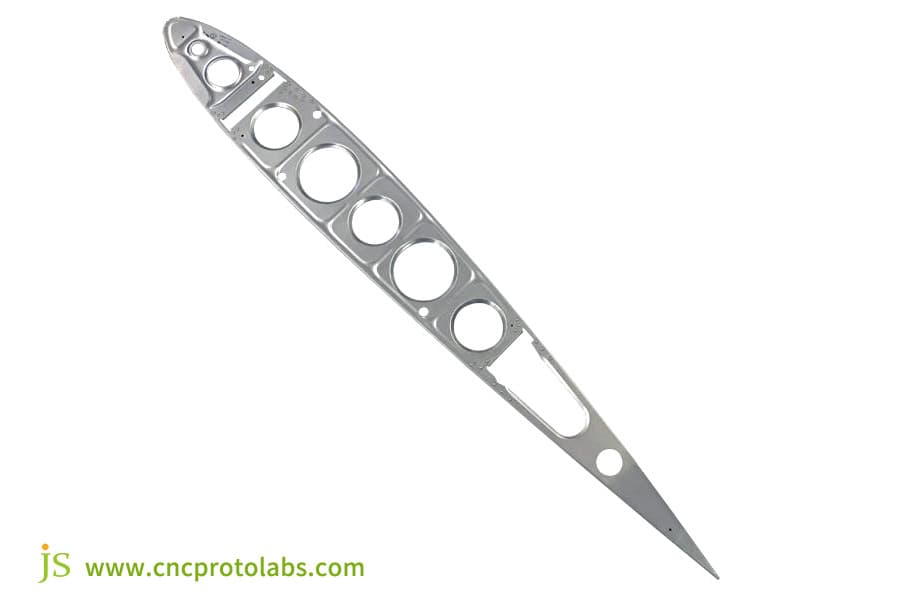
Figure 4: 5 axis machining aerospace wing
Case Study 2: 100% Qualified Sensor Cavity - How 5-Axis Technology Facilitates "Zero-Defect" Manufacture Of Spacecraft Heat Shields
Challenges
One of the space agencies needed to manufacture a heat shield substrate for a spacecraft re-entry capsule. The substrate is a compound-shaped curved surface covered with a phenolic resin-based heat shield layer just 2mm thick in the front. Any machining damage would render the part scrap.
At the same time, hundreds of cavities and channels of varying depths had to be machined on the back of the substrate with precision for accommodating sensors. The cavity depth tolerance was ±0.01mm, making the processing extremely difficult.
Solution
JS Precision adopts a 5-axis machining aerospace solution to achieve "zero defect" manufacturing through the following steps:
- A 3D scanning of the substrate blank was performed first in a bid to obtain actual model information. An adaptive programming using scan was done afterwards with a view to ensuring that the machining path was consistent with the actual blank geometry.
- The angles of the tool were adjusted in real-time through 5-axis linkage technology such that the tool remained perpendicular to the complex curved surface during milling. The depth and shape of each cavity were monitored carefully so that they would not be responsible for damaging the front heat shield.
- During machining, a Renishaw OMP40 in-machine measurement probe was used to check accuracy every 10 cavities and correct for tool wear error in real time so that machining accuracy is ensured.
Results
The sensor cavities are turned to 100% first-pass finish and 100% pass rate. The sensors are accurately installed in the mold cavity. The cavity depth tolerance is regulated at ±0.01mm by inspection and Ra0.6μm surface finish, which gives a solid data sensing foundation to the re-entry capsule thermal protection system.
Getting JS Precision's Aerospace-Grade Parts Online
Get JS Precision aerospace grade parts in just three steps with the help of online CNC service:
Step 1: Smooth Digital Transition. Sign in to the web portal for the online CNC service and securely upload your part's 3D model (supported file types such as STL and STEP) via an encrypted link. Model information will be kept confidential.
Step 2: Instant, professional feedback. After uploading your design, aviation experts will conduct a Design for Manufacturing (DFM) analysis within 24 hours, providing not only a quote but also a manufacturability report with recommendations for tool accessibility and structural optimization.
Step 3: Clear Project Management. As soon as your order is placed, you're able to track progress online (procurement of material, machining, and inspection). We will provide a Full Dimensional Inspection Report (FAIR) with the part when finished.
Our guarantee: We don't only provide CNC machining services, we're a trusted manufacturing partner aerospace compliant to meet your part machining needs.
FAQs
Q1: Five-axis machining is for super metals like titanium only?
Absolutely not. Aluminium 5-axis CNC machining is also very critical. JS Precision's specialty operations enable efficient machining of aluminium alloy aerospace components such as 7075-T6. For example, in the aforementioned integrated wing project, aluminium machining had ensured 25% weight savings without sacrificing precision.
Q2: Is 5-axis machining too expensive for the prototype stage?
On the contrary. 5-axis machining during the prototype phase allows parts to be manufactured with structure and material in accordance with the final product, allowing proper testing. JS Precision's online CNC service provides accurate quotations. While per-part cost will be higher, it can cut around three trimming iterations, reduce tooling cost, and save overall R&D cost by 20%, thereby shortening the R&D process.
Q3: What are the best practices to make my design producible to machine on 5-axis?
This is one of our tenets within our online CNC service. JS Precision aerospace engineers perform critical Design for Manufacturing (DFM) analysis and provide recommendations on tool availability, internal corner optimization, and thin-wall structure reinforcement. For example, for the sensor cavity, design optimization will ensure that damage to the thermal barrier is avoided such that your design can be produced perfectly.
Summary
5 axis CNC machining has propelled aerospace component production from the era of "mechanical assembly" to the era of "functional integration and expansion." It is not just a production process, but also an engineering way of thinking, which makes designers' visions of lightweight, high-performance a reality.
Compromise is never a choice if your system calls for performance, reliability, and the sky's the limit.
Bring your design challenges in today—come to our facility, fax or email us your CAD drawing, and receive a professional estimate with process breakdown detailed within 24 hours or less. Let's build the foundation for the next aerial marvel together.
Disclaimer
The contents of this page are for informational purposes only.JS Precision Services,there are no representations or warranties, express or implied, as to the accuracy, completeness or validity of the information. It should not be inferred that a third-party supplier or manufacturer will provide performance parameters, geometric tolerances, specific design characteristics, material quality and type or workmanship through the JS Precision Network. It's the buyer's responsibility Require parts quotation Identify specific requirements for these sections.Please contact us for more information.
JS Precision Team
JS Precision is an industry-leading company, focus on custom manufacturing solutions. We have over 20 years of experience with over 5,000 customers, and we focus on high precisionCNC machining,Sheet metal manufacturing,3D printing,Injection molding,Metal stamping,and other one-stop manufacturing services.
Our factory is equipped with over 100 state-of-the-art 5-axis machining centers, ISO 9001:2015 certified. We provide fast, efficient and high-quality manufacturing solutions to customers in more than 150 countries around the world. Whether it is small volume production or large-scale customization, we can meet your needs with the fastest delivery within 24 hours. Choose JS Precision this means selection efficiency, quality and professionalism.
To learn more, visit our website:www.cncprotolabs.com


